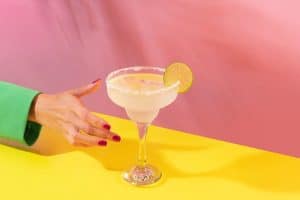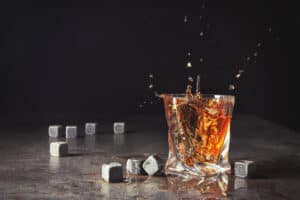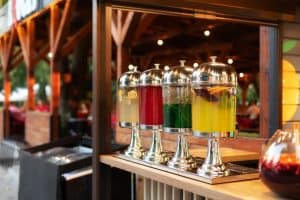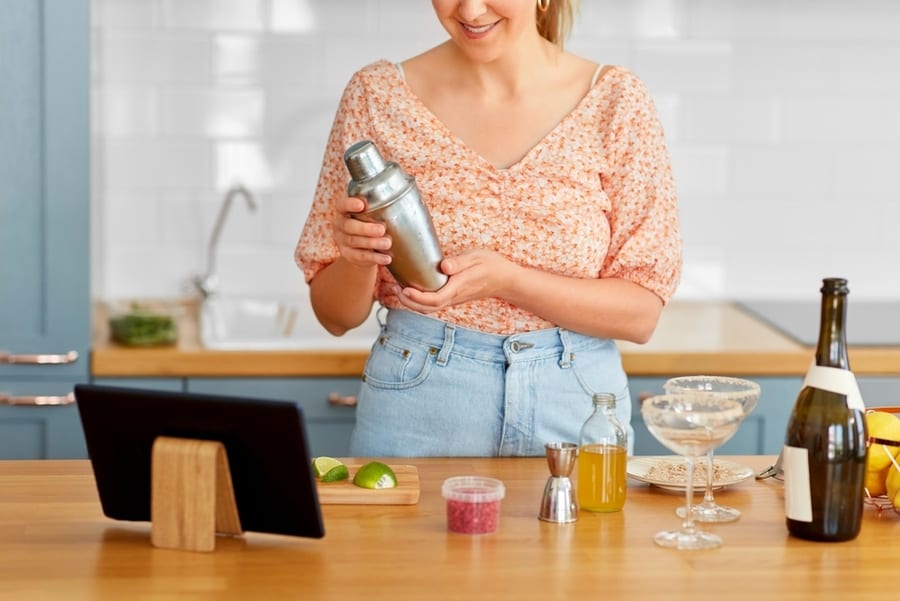
“Shaken, not stirred” is perhaps one of the most iconic lines about a cocktail from the movie world. James Bond 007 preferred his Martinis shaken and not stirred.
But some cocktails must be shaken, especially when using egg whites or cream for a creamy cocktail. We’ll investigate the dry and reverse dry shake methods so you can decide which works best for you.
Dry shaking is a method for cocktails with egg white. Shake ingredients without ice, then add ice and shake again. Reverse dry shake shakes ingredients with ice, strain, then shake with egg white for foam.
First, we’ll investigate why we shake certain cocktails and stir others to establish our baseline. Afterward, we’ll look at the pros and cons of dry shaking and reverse dry shaking cocktails.
Why Do We Shake Cocktails?
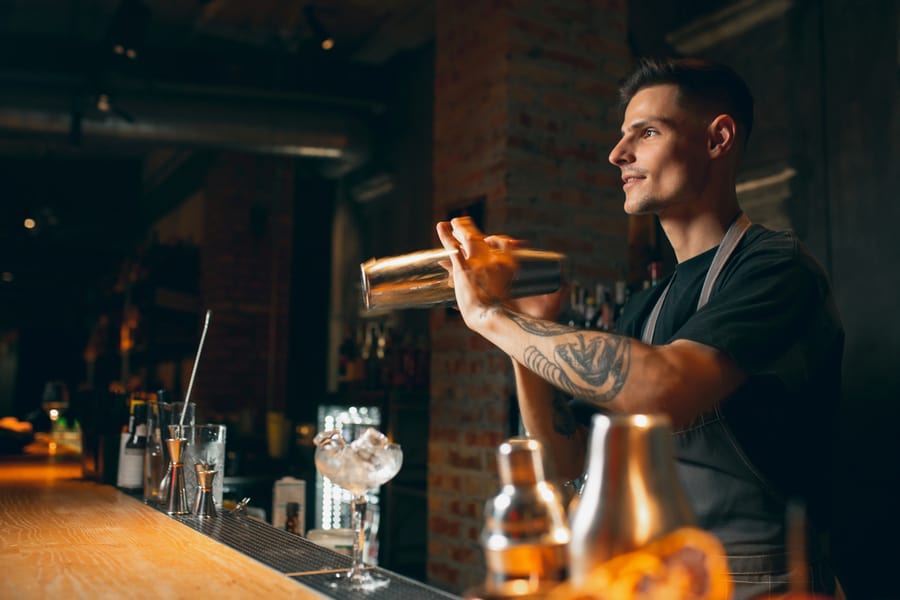
Apart from the theatrics of watching a bartender shake up fabulous cocktails, there are some other logical reasons some cocktails are shaken and not stirred.
One is to combine the ingredients. Other times, shaking will incorporate air into the mixture, chill the ingredients without diluting them too much, or break up the ice while cooling the mixture.
Moreover, a shaken cocktail delivers an ice-cold drink — something you cannot obtain when stirring. Other times, when a cocktail involves carbonated additions, like a Moscow Mule, the ingredients are shaken beforehand, and adding the ginger beer afterward.
Generally, the following elements dictate shaking: cream liqueurs, dairy, egg whites, sour mixes, or fruit juices. When shaking cocktails, we (a) improve the overall balance, (b) dilute the alcohol and adequately mix it, and (c) ensure the temperature is cold enough to hold it all together.
Remember, shaking a cocktail can also obliterate the oils in some types of alcohol. For example, a shaken Martini will break up the oils in the gin, whereas a stirred one will preserve it. So, shaken or stirred — it is a personal preference.
If you’re unsure when to shake or stir a cocktail, generally spirit-forward cocktails are stirred, while opaque ones we’ll usually shake. For more information about shakers, Difford’s Guide provides excellent information on the types of shakers and their associated techniques.
Let’s examine the dry shake and the reverse dry shake next.
Shaking Methods – Dry Shake vs. Reverse Dry Shake

We’ve looked at why some cocktails are shaken, so let’s look at the dry and reverse dry shake. Then, we’ll examine each one’s merits and downsides so that you can decide which works best for your cocktails.
Dry Shake
As the name ‘dry shake’ implies, the ingredients are shaken ‘dry,’ i.e., without any ice in the shaker. The theory behind this method is that when components are shaken at a higher temperature (room temperature), it allows them to emulsify better, creates more air bubbles, and results in a creamy cocktail.
But a dry shaken cocktail isn’t entirely dry. First, the ingredients are shaken in a shaker for about two minutes to produce the foam without dilution. After that, the ingredients are strained into the small cup (if you’re using a two-part shaker).
Next, the ice is added, and you’ll shake the mixture again to reach the desired dilution and chill. The result is a gorgeous cocktail with smooth foam that looks like a dessert in a glass.
The downside is when you shake the foamy mixture again with the ice added, most of the air bubbles are destroyed by the ice cubes. The result is a smaller foam, and the mixture is less ‘fluffy.’ It is still a gorgeous cocktail, though!
It is a common misconception that alcohol, citrus, and sugar will kill any bacteria in the egg white to make the drink safer. The CDC advises that bacteria, such as Salmonella, are only destroyed by cooking food to a temperature of between 145- and 165 degrees Fahrenheit. To avoid getting sick from the raw egg white (or uncooked cream) in cocktails while still having the beautiful foam, opt for replacement products such as aquafaba. Read here for more alternatives.
It is never 100% safe to consume raw eggs. If your bartender follows good hygiene and sanitizing protocols, uses pasteurized eggs, and with good hygiene on your part, you’ll be safe.
Farmers who follow the FDA’s guidelines on inoculating their chickens and following procedures for handling poultry products add another layer of safety. Go on, order that New York Flip; you won’t regret it!
Reverse Dry Shake
As the name implies, the shaking method is reversed. First, all the ingredients, except the egg whites, are shaken with ice in the shaker. Then, the mixture is strained, the egg white is added, and everything is shaken for a second time.
Depending on your preference, you can strain the cocktail a second time into the serving glass. We recommend a double straining to remove any bits of curdled egg and the membrane (chalaza) connecting the yolk to the shell’s membrane.
The benefit of the reverse dry shake is better aeration because the ice doesn’t knock the air out of the mixture upon the second shaking (as is the case with the dry shake). You’ll also have a longer-lasting foam on top of your cocktail.
The reverse dry shake does come with a downside, though — the egg white might take longer to emulsify because it is cold, and you’re going to shake a lot longer (and more) to achieve the foam.
Conclusion
It depends on what you prefer. Either method will produce a creamy, foamy cocktail. While the dry shake has more foam, the result is slightly less creamy. The reverse dry shake results in a firmer and longer-lasting foam. Some argue that the latter method dilutes the creaminess too much.
Either way, there will be a trade-off. Mix up some cocktails using both methods and see which one you like best. At least you’ll have two cocktails to drink after all your efforts!


